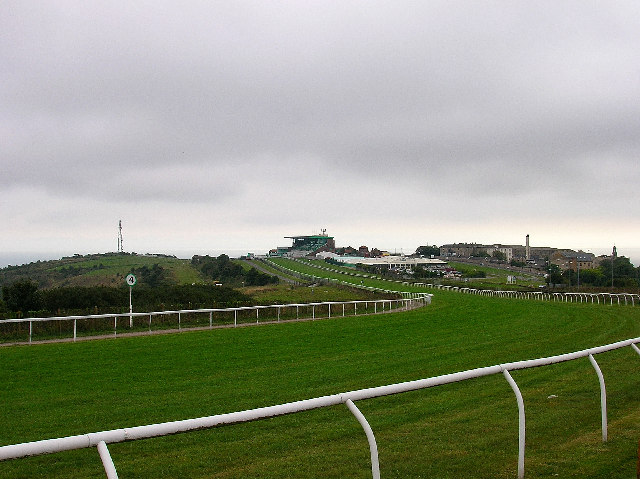Brighton Racecourse

An exclusively flat racing course, Brighton is situated just one mile northeast of Brighton city centre, and a further mile from the coast. Racing first started in Brighton in 1713 but wasn’t moved to the current site until 1783. Racing at Brighton is held annually between April and October.
The current stand at Brighton racecourse has stood since 1965 and cost a total of £400,000 to build. Whether travelling by car or by public transport, Brighton couldn’t be easier to get to, with easy road access via the A27 Brighton bypass, as well as regular trains taking under an hour from London. The track is just two miles from the train station, easily within walking distance or via buses that stop outside the station.
Ticket Prices

Brighton offers two separate ticket prices – entry to the grandstand or premier level entry, which are priced at £10 and £15 respectively. Under-18s are allowed free entry when accompanied by a full paying adult.
The Course

Most racecourses in England tend to curve back on themselves to complete a circuit, but Brighton is one of the few exceptions. The track shapes almost resembles a horseshoe and horses only ever pass the winning post once, regardless of the distance. As a result, there is no possibility to host any long-distance events on the south coast course, with the longest trip possible coming it at just under a mile and a half.
If being U-shaped wasn’t unique enough for this course, Brighton also throws in a dogleg turn down the back straight, forcing horses to turn right before they make their way around the left-handed bend to the finish. It is at around this point where runners face a sharp descent, one of the steepest you will find anywhere in British racing. Jockeys cannot afford to go flat out down out this section though as before they make it to the line there is a challenging climb yet to come.
With turns in both directions, a sharp downhill section and a tough uphill finish, Brighton is tough enough already but we have not yet mentioned the pronounced camber. The turf leans into the inside rail, often producing a great deal of congestion in more well-attended races. Clearly a track that takes some getting used to, some horses aren’t up to the test, usually the long-striding galloping types. It is their smaller, more agile counterparts that tend to prosper here and for those that do, you can usually expect them to perform well on repeat visits with course specialists a common sight.
Bias Present Only in Sprints
With both 5f 59y and 5f 213y races taking place after the right handed turn located in the middle of the course but shortly before the long left handed bend, a spot on the inside would logically appear to be ideal. This has not been the case though with horses drawn low winning less than those on their outside while also posting a much heavier loss from a £1 stake.
The reason for this is mainly because when the going is soft at Brighton, even though that isn’t all that often, the better ground is actually towards the stand side. Runners typically move across there as a result but of course it is a longer distance to travel for those on the opposite rail.
In longer races, there isn’t really any bias of note, no doubt in part due to the fact runners take on both a right and left-handed bend. They do share a similarity with sprint races though in that front runners are favoured to a modest extent.
You would perhaps think that due to the sharpness of the finish, those leading the way are in danger of running out of energy as they near the line. While this isn’t an overly rare sight, more often than not prominent runners are able to maintain their advantage. The run in is a fairly substantial at three and a half furlongs but only around half of it is uphill so horses don’t need to dig deep for a particularly long time and can often hold on.
Attendance Issues
Although Brighton has had enough races with at least eight runners over the past decade to allow us to gain a reliable insight into its draw bias, it is often not knowledge you can readily employ. Fairly regular very firm ground coupled with an already challenging course, as well as small prize money, means fields are often small at Brighton.
Between September 2009 and August 2019, 728 races (53%) held at the course featured seven runners or fewer. Whilst this makes picking out a winner easier, returns often suffer as a result and, more pertinently to this discussion, the impact of any draw bias is lessened somewhat.
Major Meetings at Brighton

There is on average around 18 days of racing each year at Brighton and the highlight of the season is their annual three-day event – The Brighton Festival – that takes place in early August. The main event at the festival is the Brighton Mile Challenge Trophy Handicap, sponsored by John Smith’s, which is a one-mile race (as the name explains) for horses aged three-years-old and over. Brighton used to be an integral part of the ‘Sussex Fortnight’, where Glorious Goodwood was followed by the Brighton Festival and further racing at Lewes.
Dining and Hospitality
In terms of hospitality and dining packages at Brighton racecourse, there is a strong selection of gourmet and silver service menus, as well as bespoke packages available if the initial menu is not to your taste. Suites are available for groups of between 10 and 200, with food, drink and complimentary photographs of your day included and these are priced in three different categories. There are silver, gold or platinum packages, all with slight differences and a natural increase in price and these start from as little as £59 per head.